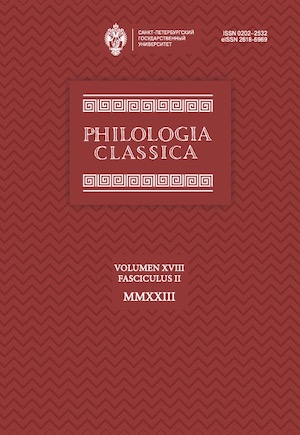Once Again about Archaisms in Modern Greek Dialects
DOI:
https://doi.org/10.21638/spbu20.2023.214Аннотация
Одним из важнейших аспектов идентичности современных греков является связь с Древней Грецией, причем как на культурном, так и на языковом уровне. Большинство неоэллиннистов рассматривает древнегреческий и новогреческий не как разные языки, а как разные этапы единого языкового континуума, тем более что лингвистические данные дают для этого множество оснований, несмотря на значительные изменения, затронувшие практически все языковые уровни. В XIX в. ряд европейских специалистов по классической филологии обратился к изучению диалектов новогреческого языка в поисках сохранившихся в них черт древнегреческого. Именно тогда впервые было высказано предположении об уникальности цаконского диалекта, как единственного, возникшего не из эллинистического койне, а восходящего напрямую к древнему дорийскому. Не обсуждая здесь справедливость или ошибочность этой гипотезы, важно отметить, что цаконский далеко не единственный из современных новогреческих диалектов, где встречаются разнообразные особенности, унаследованные из древнегреческого языка. В настоящей статье предпринимается попытка рассмотреть, какие древнегреческие черты представлены по диалектам новогреческого языка в лексике, фонетике, морфологии и синтаксисе. Прежде всего, для описания подбирались особенности древнегреческого происхождения, встречающиеся в диалектах, но исчезнувшие в стандартном новогреческом языке. Материалом для исследования в основном послужили полевые материалы автора и его коллег, собранные в период между 2000 и 2023 гг. Предпринятый анализ показывает, что наибольшее количество уникальных древнегреческих черт обнаруживается в понтийском и цаконском, хотя и в большинстве других диалектов в разной степени присутствуют те или иные архаизмы. Представляется, что число архаизмов не может быть достаточным свидетельством о древности того или иного диалекта, поскольку история развития новогреческих диалектов до сих пор крайне плохо изучена, и непонятно, почему в одних диалектах архаизмы сохраняются лучше, чем в других.
Ключевые слова:
новогреческие диалекты, лексические, фонетические, морфологические, синтаксические архаизмы
Скачивания
Библиографические ссылки
Загрузки
Опубликован
Как цитировать
Выпуск
Раздел
Лицензия
Статьи журнала «Philologia Classica» находятся в открытом доступе и распространяются в соответствии с условиями Лицензионного Договора с Санкт-Петербургским государственным университетом, который бесплатно предоставляет авторам неограниченное распространение и самостоятельное архивирование.






